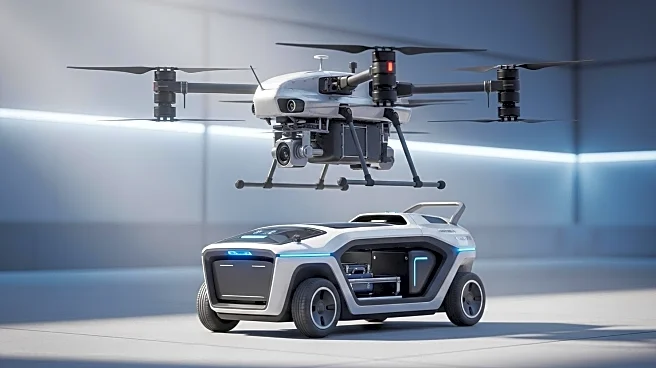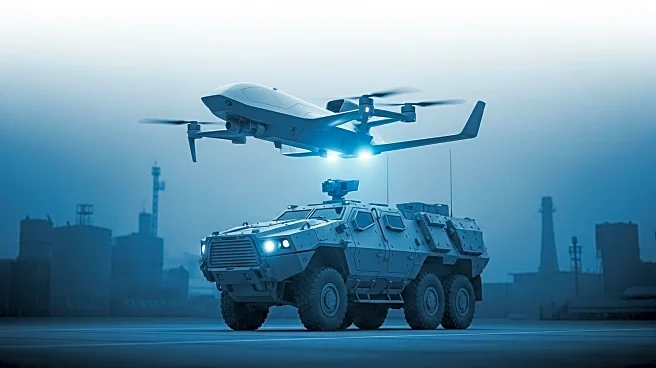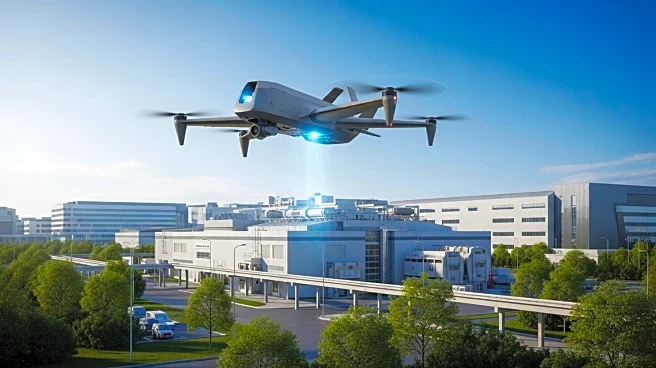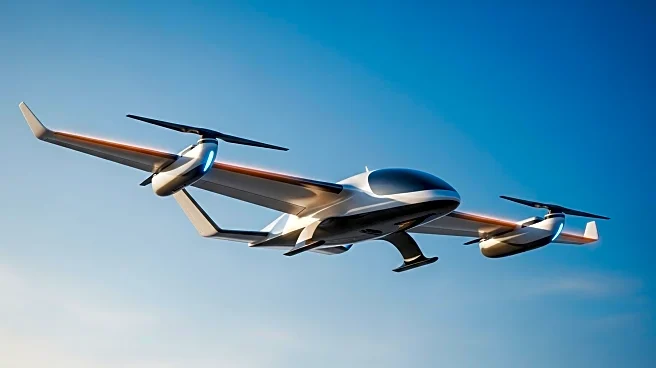What's Happening?
The DJI FlyCart 30, a heavy-lift drone, is being showcased as a transformative tool for search and rescue operations. The drone is capable of transporting life-saving equipment and supplies directly to remote or hazardous locations, which can significantly increase efficiency and reduce risks for rescue teams. Darryl Ashford-Smith, Training Officer for the Search and Rescue Aerial Association (SARAA) in Scotland, highlighted the drone's potential to improve incident response by negotiating hazardous terrain and relieving logistical burdens. The FlyCart 30 can carry a maximum payload of 30kg with dual batteries or 40kg with a single battery, and features a 20-meter retractable cable with automatic load release upon ground contact. This technology is particularly useful in scenarios such as major weather incidents, where quick delivery of medication and critical equipment is crucial.
Why It's Important?
The introduction of the DJI FlyCart 30 into search and rescue operations represents a significant advancement in public safety technology. By enabling rapid delivery of essential supplies to areas inaccessible by traditional means, the drone can potentially save lives during emergencies such as floods or snowstorms. This innovation reduces the need for rescue teams to expose themselves to dangerous conditions, thereby minimizing risk and conserving resources. As drones become more integrated into emergency response protocols, they offer a promising solution to enhance the effectiveness and safety of rescue missions, benefiting both responders and those in need of assistance.
What's Next?
The integration of heavy-lift drones like the DJI FlyCart 30 into standard rescue operations requires regulatory approval, such as the UK SORA authorisation due to its weight. This process involves detailed submissions for operations like winch use and Beyond Visual Line of Sight (BVLOS) flights. Despite the complexity and cost barriers, especially for voluntary rescue teams, the potential benefits of this technology are encouraging. As drone technology continues to evolve, it is expected to become more cost-effective and capable, further enhancing its role in public safety and emergency response.
Beyond the Headlines
The deployment of drones in search and rescue operations raises important considerations regarding regulatory compliance and the need for specialized training. As these technologies become more prevalent, there may be ethical and legal discussions about their use in public safety, including privacy concerns and the balance between technological advancement and human oversight. Additionally, the long-term impact of drones on traditional rescue methods and team dynamics could lead to shifts in how emergency services are structured and operated.













